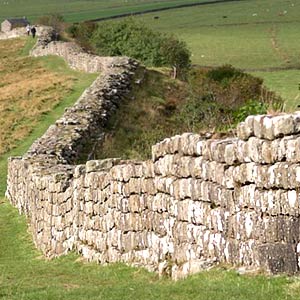One of the most famous remains of the ancient Romans in England is the Hadrian's Wall. The best-known frontier in the entire Roman Empire is a reminder of the past glories of the world's greatest civilizations. This World Heritage site ranks along with Taj Mahal and other treasures as great wonders of the world. The wall was constructed nearly 2,000 years ago by the Roman Emperor Hadrian to mark the northernmost boundary of Roman Britain. A visit to the Hadrian's Wall in Newcastle leaves you in awe and wonder with its dramatic and wild landscapes. The mighty Hadrian's Wall ran across the whole width of Britain, from Wallsend (Newcastle-upon-Tyne) in the east to Bowness-on-Solway in the west. The wall was originally 15 feet high with 6-foot battlements on the top. The wall snakes across the country, always commanding the high ground. The wall had small forts called mile castles to accommodate troops at every mile alongside its entire length. In between each pair of mile castles, there were two watchtowers. These towers were used to flash quick messages up and down the length of the wall in case of an attack.
Thus sixteen larger forts holding nearly 500 to 1000 troops were built into the wall, with large gates on the north face. The Romans had dug a wide ditch towards the south of the wall (vallum), with six-foot high earth banks. Any invader had to cross either of the bigger gates or the 27 ft wide ditch to enter the Roman Kingdom. Unfortunately some sections of the Hadrian's Wall were destroyed after 1745 in order to use the stone for a military road, which would allow the troops to move quickly from east to west. However, the best-preserved sections of the wall are in the centre of the country, round Housesteads. You can also find a number of museums along the wall exhibiting some of the items left behind by Romans. Book in advance and you can visit the entire wall - as part of walking tours or cycling in groups.













